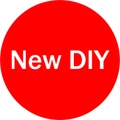Order the parts
Buy a kit
kv4p HT makes no money from these sites, but they provide convenient kits:
Or loose parts
- If you don't want a kit, you can order a custom PCB from a service such as PCBWay or JLCPCB (PCB designs are here)
- Buy a SA818-V or SA818-U radio module (DRA818V or DRA818U may be substituted)
- Buy a SMA male antenna of your choice. e.g. pocket-size antenna or 1/4 wave Signal Stick
- You can use a USB C cable of your choosing, or buy a U-shaped adapter like this small connector from AliExpress (choose "Color: C female-C-C", be careful because they have similar names!)
- Buy sticky gel pads to connect it to your phone securely with no residue
Solder the parts
- Solder the radio module and any other parts you didn't have pre-installed in the custom PCB you ordered.
- Then, trim any through-hole component legs (just the SMA connector on newer PCB designs) so they don't contact your phone.
3D print the case
- Choose a kv4p HT case on Thingiverse (make sure it matches the PCB version 1.x or 2.x)
- The case looks cooler with 2-colors, which most 3D printers can do (see how)
Assemble the parts
- Insert the PCB into the case until it snaps in
- Cut a strip of sticky gel pad to attach the kv4p HT to the back of your phone
- Screw on the antenna
Optional: Flash non-volatile storage (NVS)
- If you bought a kit, you can probably skip this step as the vendor should have done this for you!
- Otherwise, flash the NVS that matches your PCB version and radio module type from the bottom of the Firmware page.
Install the Android app
- The app requires Android 8 or higher, which came out in 2017 and pretty much all phones with a USB C connector will have.
- You can search the Play store for "kv4p HT", use this link to the kv4p HT app, or scan this QR code:
- NOTE: The first time you run the Android app, it will flash the firmware onto your kv4p HT. It takes about 5-10 minutes.

Need some help?
Visit the kv4p HT Discord general channel and ask for advice.


